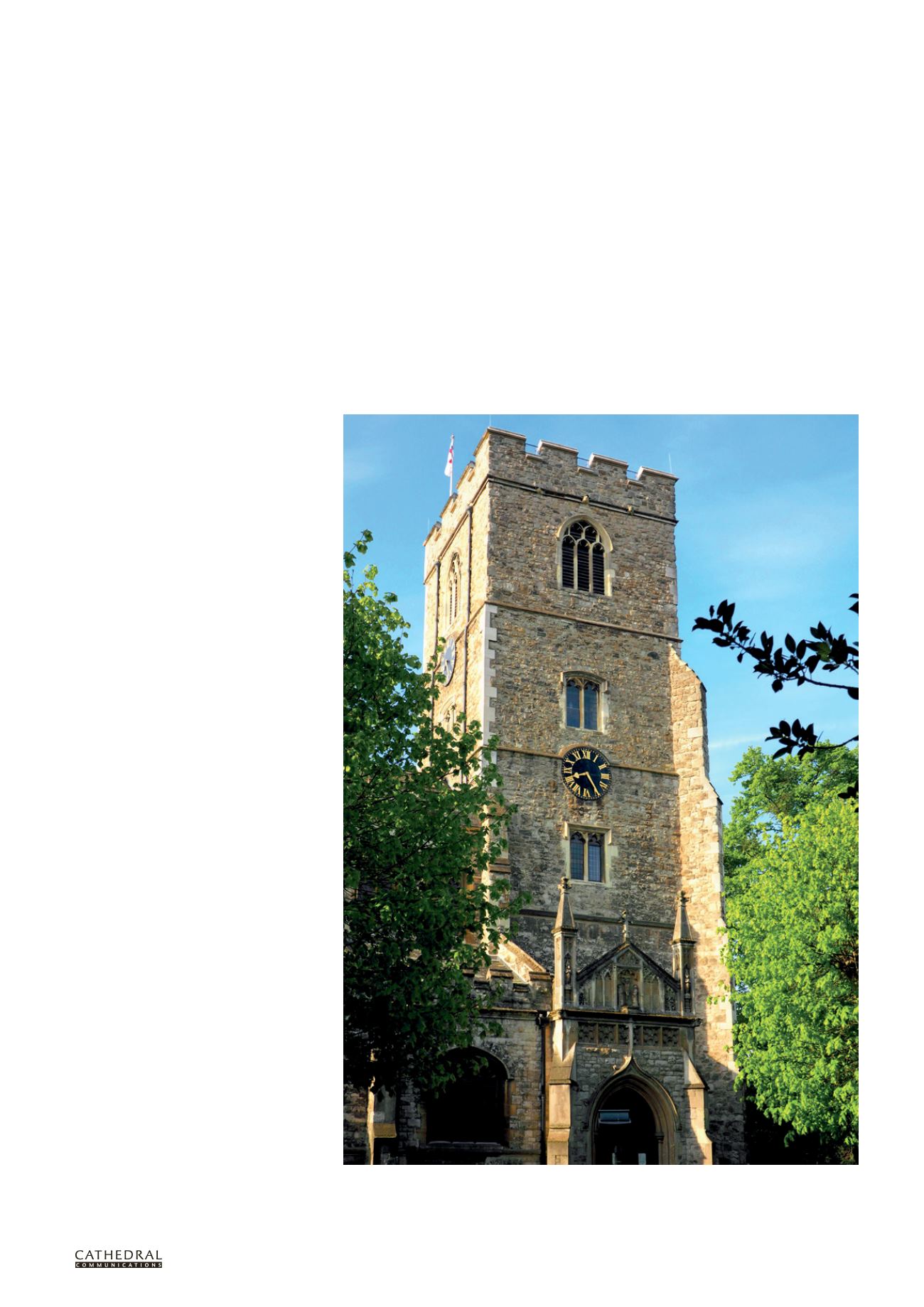

BCD SPECIAL REPORT ON
HISTORIC CHURCHES
24
TH ANNUAL EDITION
33
BELL FRAMES and
BELL TOWERS
A practical approach to assessment
Andrew Dutton
I
N ENGLISH bell ringing, or ‘full-
circle ringing’, each bell is attached
to a wheel on a frame enabling it to
be rotated through 360 degrees. Bell
ringers regularly need to balance their
bell with the mouth upwards, yet the
larger, ‘tenor’ bells typically weigh around
500kg. Needless to say, bell ringing is
always hard work but any movement in
the frame or the tower affects the arc of
the swing, making some rings particularly
difficult, and bell ringers frequently ask
what can be done to make ringing easier.
There are several factors which can
affect the quality of the ring. Except for
the problem of poor bearings, which
can be dealt with by the bell founder,
the issues of structural concern are
slackness in the bell frames, lack of
stiffness in the foundation beams to
the bell frames, and movement in the
tower itself. These potential movements
are caused by the swings of each bell,
some of which are oriented north-
south and some east-west, so the forces
and the subsequent movements are
irregular in both time and direction.
The vertical force caused by a swinging
bell is close to 4¼ times the deadweight
of the bell and the horizontal force can
be 2½ times the deadweight of the bell
(see Further Information, Heywood). The
movements of the bell frame mean that the
pivots to the bells are continuously jerking
about and that makes it difficult to hold the
bell in the upright position, just past top
dead centre, on the stay.
Old bell frames were made of timber,
braced with diagonal struts and tensioned
with iron ties. The timbers flex and the
joints ‘work’ during ringing, loosening
with time. Regular tightening of the tie
bolts can help to minimise the slackness,
but the frames are not as stiff as the later
cast iron frames and, more recently,
fabricated steel frames.
All Saints Church, Fulham, London where the medieval oak bell frame had gradually dried out and warped. The
resulting movement had made bell ringing increasingly difficult and was beginning to damage the tower masonry.


















